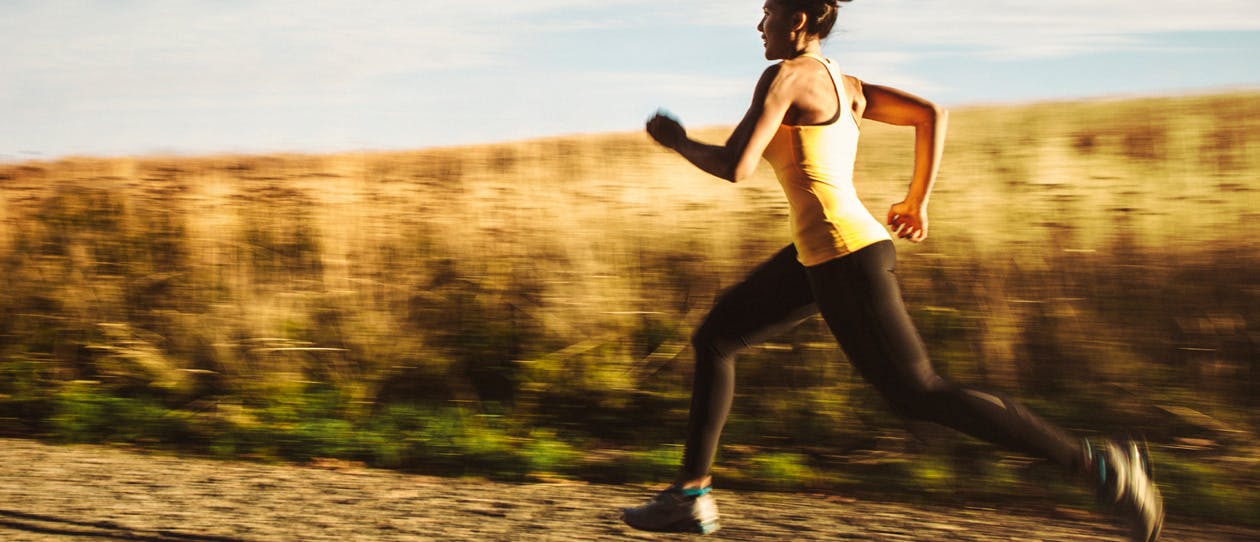
- Health hub/
- Tips & Advice on Improving your Energy Levels/
- Tips On How To Become A Faster Runner Gradually


2
Your how to guide on speed sessions to up your pace and become a faster runner.
One of the really important points you need to be aware of when doing speed work is that these sessions are harder than your long runs.
Let’s take a look at some different types of interval sessions that is common running lingo and often referred to in training programs.
I won’t lie- these are hard to do, because your likely up to somewhere above 85% of your maximum heart rate, and you are also running quicker and exerting more force on all your muscles and joints. You need to be motivated, prepared, warmed up and trained for these harder sessions..
Why you need to warm up
Warming up is crucial because amongst other things as it helps to start directing increased blood flow towards the muscles that will need it the most, it also means that when its time to start the first interval or effort – it’s a good one – it’s close to or at your targeted pace.If not you may be wasting the first section of your workout on warming up and not getting maximum benefit. That’s why we always recommend easy slow running warm-ups before these sessions.
Running drills can also be used warm-up. As a good indication 2km and upwards for advanced runners starting out slow and gradually getting slightly quicker is very common and recommended – another way of looking at this is somewhere between 10 minutes up to 20 minutes of easy running before a hard session.
Once you’re warmed up – lets take a look at some common sessions in the “Interval or hard running” basket and what you should look for to get the most out of it.
Short Hills
This type of session is often continuous in nature. The hill is there to immediately lift the intensity of the running and provide an added strength component, which is entirely functional to running.I like to think of hill sessions a “gym sessions for runners”. In a typical hill set we may run 15 repetitions hard up easy back.
A short hill is close to 30 seconds in length when you’re running hard up it. So you may need to scope out and test just how far you would run up a hill near you before actually doing this for the first time.
Pick a hill, which is gradual and not too steep. After you are warmed up and ready to go, run up hard right to the 30 second point you have previously marked out, immediately turn around and jog easy back to your start line.
With minimal or no break at all then go hard up again to the same point – continue this for the specified number of repetitions.
Long Hills
Similar to short hills in the adaptions you will get, but a different type of session.The effort is longer but so is the recovery. You will likely run anywhere from about 200 metres right through to over 350 metres depending on your level.
The key to this type of hill is to accelerate well at the beginning and then get into a steady rhythm you can hold all the way to your designated top marker.
Again scope out a hill you will use prior to your first session and know your allocated start and finish point.
Always finish at that same point and keep a track of your times – ideally it will feel harder and harder to maintain the times but that is something you can aim for.
When running short or long hills – try not to look down at the ground. Stay tall and look up towards the horizon, incorporate arm swing too – it’s not just about the legs.
Speed Work
These repetitions are almost always done on the flat and in these training programs they are.When doing this type of session, a grass or tartan oval is recommended. One of the reasons for this is because its accurate in distance but it also is a softer surface and just like running up the hills you wont have as much impact and possible injury than if it was done on a harder surface
Because this run is flat – all the effort is from you running harder. Keep your form and try to run all repetitions within a 2-5 second window.
Keeping time is important in this type of session and ideally you will do this with a running buddy or even better a running group. Running in a group keeps you motivated and accountable.





